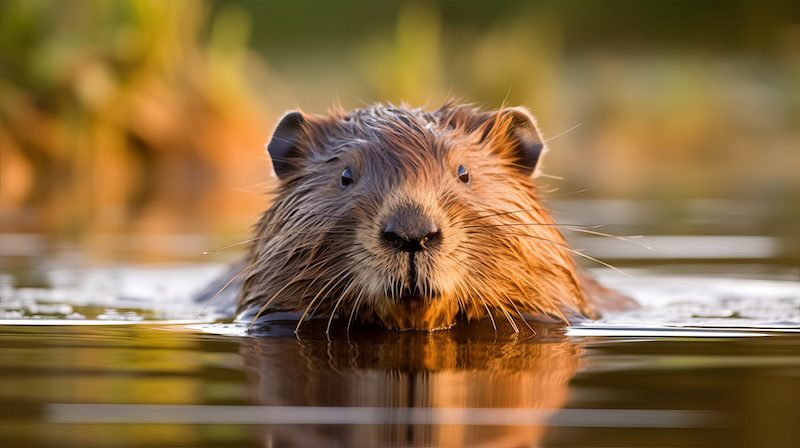How Fur Frustrates Fouling
When Andrew Dickerson reached the turnaround point on an Oregon coast hike with his muddy dog, he wondered how he was going to wash the grubby canine before allowing her into the rental car. “But by the time we got back, she was all clean,” he says. Dickerson, who studies biomechanics and fluid dynamics at the University of Tennessee, Knoxville, and his colleagues now explain how the mud falls off a dog’s coat during a walk [1]. The fur’s ability to flex in air, water, or other flowing fluid, they find, gives each hair its fabulous antifouling features.
Engineers and scientists who design antifouling structures and coatings often look to nature for ways to passively inhibit the undesirable buildup of organic and inorganic material. Animals and plants have independently evolved surface micropatterns that make it harder for these foulants to stick around. Mimics of these antifouling surfaces—for example, the barricading flow structures of shark skin and the extremely hydrophobic leaves of lotus—offer possible alternatives to the chemicals and to the energy-intensive industrial methods used to keep contaminants at bay.
Inspired by his dog, Dickerson set out to understand the mechanics of how fur cleans itself. Rather than dry hairs, however, he and his group decided to probe the antifouling properties of mammal fur when it’s subjected to a liquid flow. “A lot of furry mammals spend their lives wet, and they don’t end up covered in slime. Look at beavers and otters,” he says.
Dickerson and his colleagues built a flow chamber that exposed individual hairs to a slurry of bright-white titanium dioxide nanoparticles that form 5-µm-diameter clumps. Each hair sample was fixed at one end to the top of the chamber and was free at the other. In each experiment, a pump circulated the liquid through the chamber, moving across the hairs at 10 cm/s, for 24 hours. The experiment was repeated for 9- and 5-mm samples of beaver, coyote, and synthetic (polypropylene) hairs, which represented a semiaquatic mammal, a terrestrial mammal, and a fleece-clad human. In another iteration, the hairs were held taut at both ends. The researchers captured with high-speed video each hair’s oscillations in the flow and counted the number of titanium dioxide particles cleaned from the hairs at the end of an experiment to quantify the fouling incurred by each hair.
They found that the more a hair flexed, the cleaner it stayed. Long hairs accumulated fewer particles per unit surface area than shorter ones, because they deflected more in the flow. Meanwhile, hairs fixed at both ends captured 10 times more particles per surface area than their free-ended counterparts. Coyote fur collected the greatest number of particles and beaver fur collected the least.
What happens, the researchers explain, is that any film or buildup that accumulates on a hair’s surface gets broken while the hair deforms in the flow. This deformation strains the surface, defeating adhesion and helping the buildup to flake apart and fall off. “It’s like getting food or paint on your skin; you massage the skin and break the crustiness of whatever has dried,” Dickerson says. He speculates that the mechanism would also hold for hairs in air, which would account for his dog’s clean coat at the end of the walk.
Environmental engineer Matthew Reidenbach, of the University of Virginia, who studies environmental fluid dynamics, says that understanding the self-cleaning ability of hairs may enable the future design of antifouling surfaces, which have broad applications in engineering and medicine. The study is “an important first step in understanding how dense packing of fur on animals offers the combined benefits of insulation and mechanical contact with neighboring [hairs] to enhance the removal of deposited particles that might cause fouling,” he says.
Dickerson suspects that the natural dense arrangement of hairs in a coat likely furthers their ability to stay clean. The next step is to find out how a coat’s density correlates to its ability to shed foulants. Dickerson points out that furry mammals are active, and natural motion induces friction between hairs and potentially their collective self-cleaning. “Sloths are the only mammal with consistently grimy fur, and they’re not active at all,” he says.
–Rachel Berkowitz
Rachel Berkowitz is a Corresponding Editor for Physics Magazine based in Vancouver, Canada.
References
- M. Krsmanovic et al., “Fur flutter in fluid flow fends off foulers,” J. R. Soc. Interface. 20 (2023).





